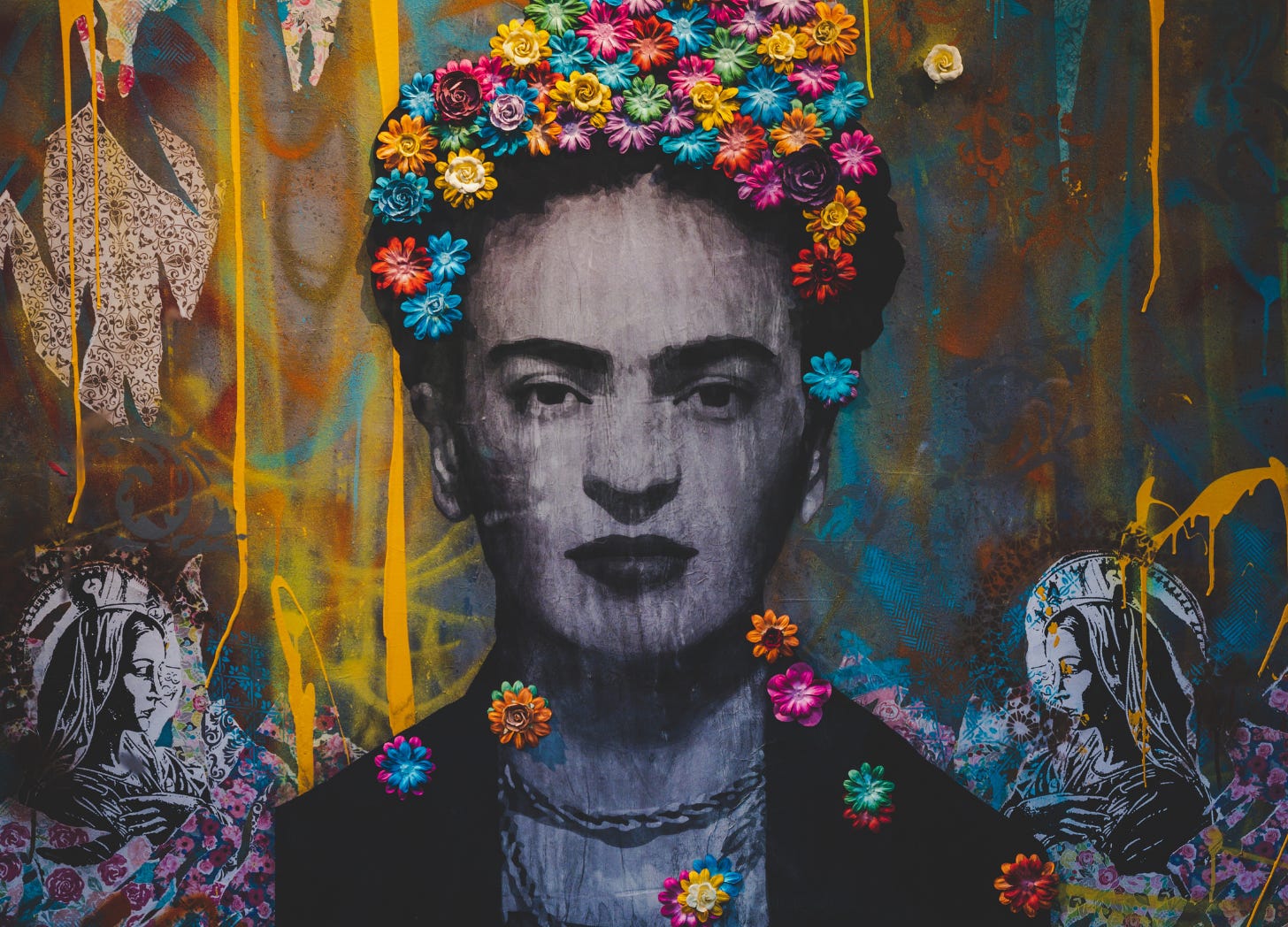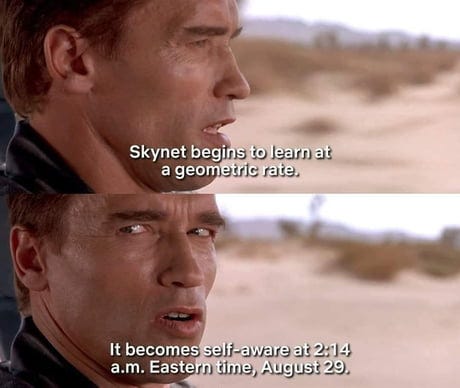The AI Amplifier: Why Humans Still Make the Magic
Experience, Curiosity, and the “Creative Middle” in an AI World
→ This is a story about why AI will always need a human anchor.
🙋🏻♀️ Hi! I’m Amy Zwagerman——Fractional CMO, brand strategist, and founder of The Launch Box. I help founders and creative experts build brands that feel like them and actually work.
If you’ve noticed I’ve been quiet since June… you’re right. What started as a vacation turned into a full-blown summer sabbatical. I didn’t plan it, but I needed it. And honestly? I’m glad I pressed pause. Writing this piece felt like stretching muscles I’d been neglecting—my storytelling ones—and it reminded me why I love this work so much.
If you’re new here, welcome. If you’ve been with me for a while, thank you for sticking around. I’ve got more stories, strategies, and Purpose Plays coming your way this fall.
→ If your brand feels scattered or invisible, and you want to find it’s voice, let’s talk. You can book a free discovery call or explore my services here.
TL;DR
AI can draft, dazzle, and even deceive—but it can’t tell your story. Used with context, curiosity, and a human touch, it becomes an amplifier, not a replacement. Join me as I explore the messy middle between tradition and technology.
I want to have a conversation. Not a debate, not a pitch—just an honest reflection on how AI is reshaping creativity and productivity in every aspect of our lives.
Case in point: I was writing about authenticity in marketing and the presidential race when ChatGPT handed me quotes that fit my story angle perfectly. Except… when I went back to check the sources, I found out they didn’t exist. When pressed, the tool admitted it had stitched them together from “sentiment.” WTF? I had asked for quotes.
(Side note: that piece never saw the light of day—my theory unraveled as soon as I discovered the facts I had so expertly woven into the story were fake. 🤦🏻♀️)
That moment landed hard. It’s when I realized LLMs like ChatGPT, Perplexity, Gemini, and Claude are just smarter, faster machines coded to please (and, ahem, make us feel smart)—even if that means bending the truth. Which is why I see AI less as a replacement for creativity and more as a mirror: it amplifies what you bring to it, blind spots and all.
For me, AI is a magnifying glass, a creative sparring partner, and a way to get to the heart of what I want to say, faster. It doesn’t replace my originality—it unlocks it when I know what to ask and where to push back. Maybe you disagree and find my premise bananas. I’m ok with that. How and when to use AI—or not—is a choice I believe everyone has to make for themselves. But denying that AI is changing how we work, play, and live? That’s a risk I don’t want anyone to take.
A quick note for those of you who are new here: I like to pause in my posts with something I call a Purpose Play. Think of it as a moment to step back from the ideas, reflect on how they connect to your own work, and maybe spark a fresh perspective.
Purpose Play
Before we dive deeper, pause: What’s your relationship with AI—excitement, skepticism, curiosity? If you’ve used AI, have you noticed moments where it’s helped or held you back? If you haven’t played around with it yet, why not?
I’m convinced the secret to unlocking AI’s potential is context—and a lot of it.
This isn’t new. You might remember the early days of computing (it wasn’t that long ago), when the adage “Garbage In, Garbage Out” (GIGO) was a common rule of thumb. And, IMHO, it still applies.
For those of you who are unfamiliar, the theory goes like this:
“flawed, biased, or poor-quality input produces a result or output of similar quality” (Wikipedia).
AI doesn’t make you brilliant. It gives you speed. It gives you access to more information than you could ever cull yourself. It organizes things. But it also reflects blind spots. And panders. And hallucinates. AI is like the overeager intern who desperately wants to impress, so much so that they don’t admit when they’re in over their head.
Let me give you an example. If I feed AI vague or broad requests, I get generic output that is reminiscent of a thousand other landing pages, marketing emails, and blog posts we’ve all seen. This is not good work. Is is not AI making my job easier, and it certainly isn’t work I would ever put in front of a client. But when I layer in the context I’ve earned through years of watching a brand’s heartbeat, understanding human psychology, and dissecting market behavior, the tool suddenly becomes a turbocharged extension of my thinking. It sharpens my ideas, surfaces fresh angles, and frees me up to focus on what truly matters: the story, the strategy, and the connection, i.e., my zones of genius.
Purpose Play
Think about your own “zones of genius.” Where do you feel most alive in your work—where ideas flow, time disappears, and you’re fully in it? Now, ask yourself: how could AI support you in those spaces without diluting what makes them uniquely yours?
I’ll name my lane: I’m not an artist by training. I’m a strategist, a business builder, and—only recently—a curious explorer of creativity.
I’m going to give a quick nod to Julia Cameron here. ‘The Artist’s Way’ helped me see that creativity isn’t about titles or temperament. It shows up in everyday choices: cooking a meal, decorating my home, planting my first (smart)garden, even designing a strategy that clicks. That shift changed how I approach my work, my life, and even how I think about AI: it’s power isn’t in what it is, but in how you channel it.
Put another way, I don’t think AI is inherently creative. It’s how you use it that makes the difference.
I learned a similar lesson back in my home entertainment days, when the industry was evolving at warp speed (all hail Star Trek 🙇🏻♀️). In less than two decades, we went from VHS to DVD, DVD to Blu-ray, Blu-ray to 4K UHD, and from video rentals to streaming (And for the videophiles out there—yes, I skipped Betamax and LaserDisc. They were before my time, forgive me.). I loved it. I sought out projects on the bleeding edge and even bought a 3D TV—glasses and all—because I wanted to see what was possible.
The takeaway?
Tools don’t erase creativity, they amplify it.
Technology can package and distribute stories at new speeds and scales, but the human spark is always the anchor. AI feels like the next iteration of that truth—only now the speed is faster, the stakes are higher, and the margin for passivity is shrinking.
Purpose Play
Where does your creativity—and your storytelling—come alive? Imagine bringing AI into that process: does it help you spark new angles, sharpen your voice, or expand your reach? If you’re afraid it will make your work less distinct, ask yourself—what if it could actually make your voice clearer, stronger, and more your own?
I have so much respect for the purists—the people who insist on the handmade, the unscripted, the deeply human.
Their devotion to craft is a reminder that what’s real will always matter.
For me, that devotion shows up most clearly in storytelling. It’s the thread that runs through my career, from my start at People magazine to the brand strategies I shape today. Stories are how we connect—and why the human element can never be replaced.
But it doesn’t have to be purity or technology. The real art is in weaving them together—honoring tradition while experimenting with what’s next. That’s where I live: in the overlap, where strategy meets curiosity and AI adds fuel without ever grabbing the wheel. My job is to stay curious, skeptical, and human enough to keep the work grounded.
Because the magic isn’t in choosing sides—it’s in the messy middle.
(And let’s be honest: the last thing I want is an AI that thinks it’s The Terminator.)
Purpose Play
Where do you see yourself in the balance between tradition and technology? If you leaned into both with intention, what kind of work—or story—could you create that wouldn’t be possible any other way?
AI’s here to stay. It will shape our future in ways we’re only starting to imagine.
Whether you embrace it, analyze it cautiously, or avoid it intentionally, its impact is undeniable—and ignoring it could mean missing real opportunities.
But the heart of creation, innovation, and connection remains squarely with us: the people who ask, who feel, who translate raw input into meaning.
Because here’s the truth: AI can generate content, but only humans can tell stories. And it’s story—the way we connect dots, share meaning, and create belonging—that makes the difference.
Purpose Play
What’s one project you could take on right now—big or small—where you bring in AI alongside your own expertise, curiosity, and personal story? Pick it. Try it. See what happens.
So let’s keep this conversation going. Which parts of your work are you amplifying with AI? Where do you push back? What surprises have emerged when you let AI work alongside your brain, not instead of it? Share your stories in the comments or send me a DM—I read every one.
If AI is the amplifier, your story is the song.
Ready to make your brand sound like you—clear, authentic, and magnetic to the right customers?
→ Book a free discover call or subscribe to Marketing Jam for more real talk, brand strategy, and tools that turn context into clarity.
AI-supported, human-led. All ideas and insights are my own. Curious how I use AI and where I draw the line? See my AI Disclosure Policy →
Integrity Pledge 🙋🏻♀️: The books, newsletters, shows, podcasts, and client work shared here are 100% reflective of my world. I will always disclose if and when I have a relationship with a brand I mention in a post or am sharing an affiliate link.





